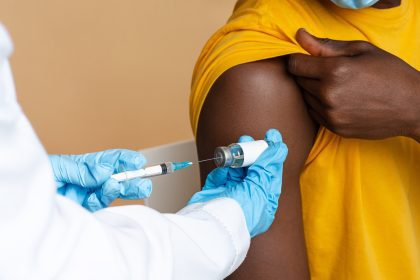
Veena N. Rao, Ph.D., co-director of the Cancer Biology Program at the Morehouse School of Medicine, can hardly contain her excitement during our interview. For the longest time, it has been thought that black women are at a greater risk for triple negative breast cancer, the more aggressive form of breast cancer, and now Dr. Rao’s research has provided the evidence to back that up.
The implication of Dr. Rao’s research is that she could one day “predict predisposition” to the disease. Dr. Rao spoke to rolling out recently about triple negative breast cancer and the findings of her study.
Can you explain the difference between typical breast cancer and the aggressive triple negative form of the disease?
There are two kinds of breast cancer, 75-80 percent of women are positive for the estrogen receptive breast cancer, and there is a marker on the cell surface which identifies this particular kind of breast cancer. There’s a small population 15-20 percent, and these are called triple negative because they lack the receptors on the surface for estrogen receptors.
When you have an estrogen receptor positive breast cancer, you have a lot of targeted therapies like Tamoxifen that can direct against the positive breast cancer. When you have this triple negative breast cancer, there are no markers on the surface for these receptors, so there are no targeted therapies for these aggressive breast cancers.
Why are young African American women more susceptible to triple negative breast cancer?
You are asking the million-dollar question. Even though breast cancer, especially triple negative is also present in white women, young African American and Hispanic pre-menopausal women have a higher number [who develop] this particular cancer. Currently, there’s very little known about that. My research has started to understand if there’s any difference between the biology of these cancers that are present in the aggressive cancers in African Americans and in whites so that we can know the differences that result in these aggressive breast cancers.
What new breakthrough in your breast cancer research shows promise?
A lot of work has been done. What we’ve found is that there is a gene, BRCA1, it is called a tumor suppressive gene because the function of this gene somehow prevents breast cells from growing very rapidly and causing cancer. Yet when this gene is mutated, it results in triple negative breast cancer.
So the first question, which I’m researching, is why is it that the BRCA1 mutation results in triple negative breast cancer? What we’ve found is that we have looked at the cytoplasm protein which is present in the normal person, this protein is a shuttling protein.
In this sense, you have the nucleus where you have the delicate information, and then you have cytoplasm. This protein shuttles between the nucleus and the cytoplasm.
When an African American woman has triple negative breast cancer and it’s a mutation of BRC1, what we observed is that this mutant protein stops shuttling and it just stays in the cytoplasm.
You can imagine the cell to be like a host and BRCA1 to be like the woman of the house, and the nucleus like the kitchen, if you don’t cook your regular meals in the kitchen, you don’t stay in the kitchen all the time. You cook the meal and then you go back to the other rooms or you go out.
BRC1 has to move to the nucleus, and once its job is done, it has to go back to the cytoplasm. If it’s unable to do that, it results in breast cancer.
What are your suggestions or guidelines for women to be proactive about their breast health?
As a basic researcher, what I could say is that you need to be very vigilant. If you have a family history, you need to get a regular checkup by age 30, and also you need to do an MRI.
Other women who do not have a family history of breast cancer, the American Cancer Society usually recommends the age to be around 40 for you to go for a yearly mammogram.
What are the greater implications of your research?
We can use this to predict predisposition to breast cancer. We also have identified a potential biomarker that can be used for early detection. It could also be used for looking at drug resistance, and also to predict the progression of the disease.
Lastly, what we are really going to focus on in the future is to develop targeted therapies for these triple negative breast cancers by identifying drugs that can target mutant BRCA1 proteins that are present in tumor cells of patients.
To learn more about the Morehouse School of Medicine, visit www.msm.edu.














